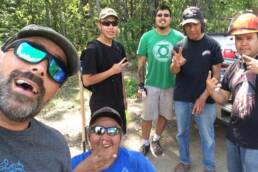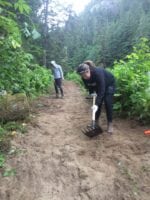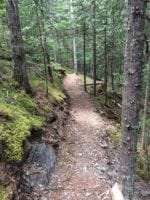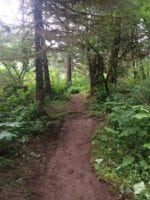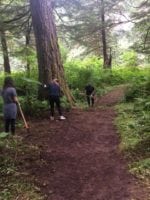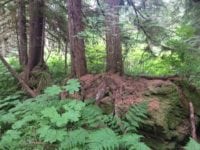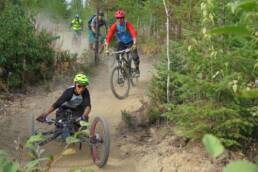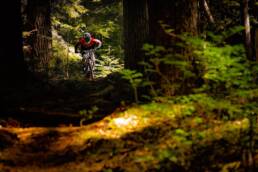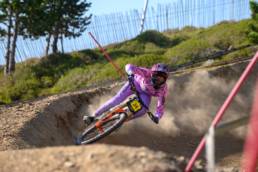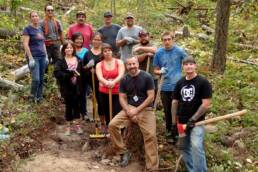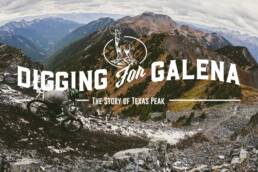Patrick Lucas, the founder of British Columbia’s Aboriginal Youth Mountain Bike Program, was recently in northern British Columbia hosting a series of trail building workshops. This is his story about how building mountain bike trails is redefining the First Nations experience.
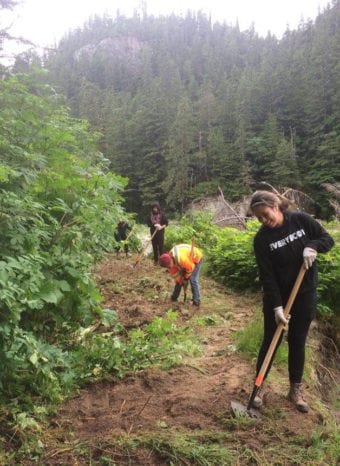
“We’re not just hacking a path through the trees,” I lecture to a line of youth strung out along a narrow patch
of dirt on the banks of the Gingolx River, a narrow winding ribbon of dark blue waters flowing out of the mountains that rise like sentinels above the small Nisga’a village of Gingolx on the northwest coast of British Columbia. “We’re creating an experience, revealing a story that everyone who passes after us will relive and contribute to with their own footfalls and bike tires.”
The kids roll their eyes, shrug their shoulders and keep digging. For many of them, this is their first job and it’s likely not what they were expecting, stuck out in the woods with some dorky guy that gets way too excited about a line of dirt through the woods. Hired by the Village government, they will be spending the next four weeks building trails around the village. They are skeptical. “No one will use these trails,” they bemoan as we struggle through thick patches of Devil’s Club and thorn bushes.
“They will,” I encourage them. “We just have to carve the right story!”
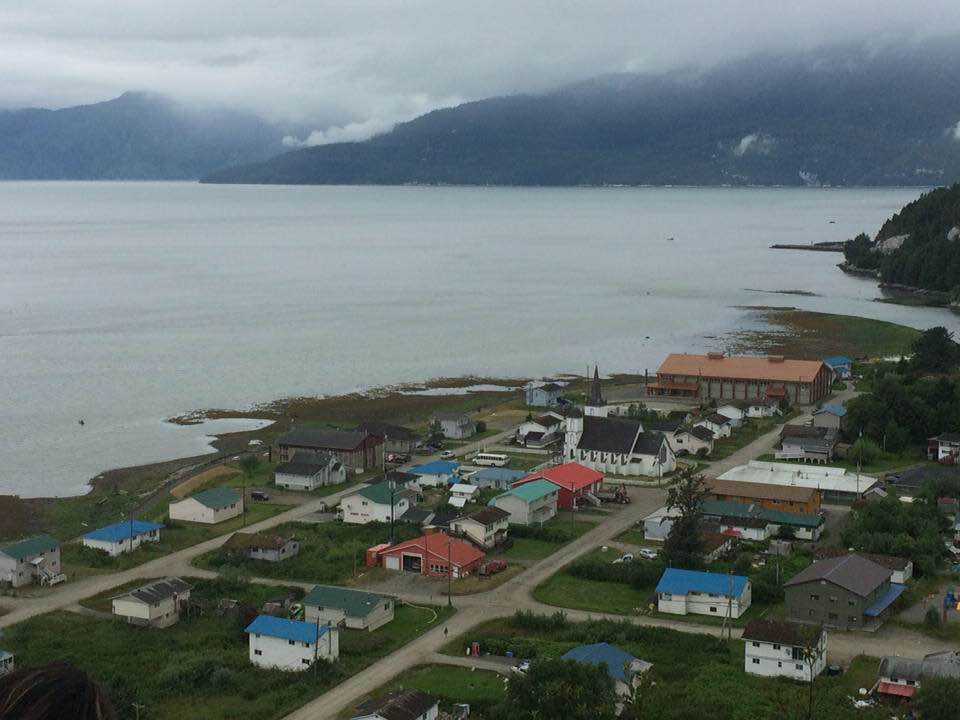
For me, as the founder and director of the Aboriginal Youth Mountain Bike Program (AYMBP), this represents my final stop on a five-week road trip that has taken me to Indigenous communities across the interior plateau with the Tsilhqot’in, along Highway 16 that cuts across northern British Columbia with the Nadleh Whut’en and the Lake Babine First Nations, to the Nass Valley and the heart of the Nisga’a Nation. I’ve been facilitating a series of trail building workshops, training youth to plan, build, and maintain single track nature trails for hiking, running and cycling.
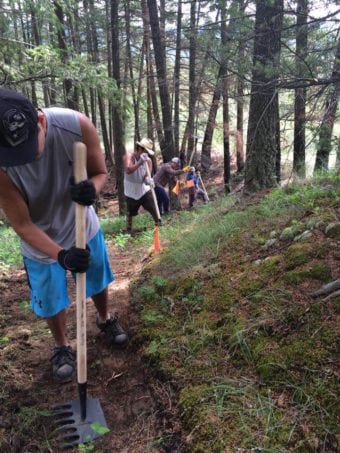
When the AYMBP first started, our focus was on riding and teaching youth to get out on their bikes. We quickly learned we were coming at the issue from the wrong direction. “Thanks for teaching our kids to ride,” the leadership in communities would often tell us,” There’s only one problem. There’s nowhere to ride.” More often than not, the only place the community had for outdoor activities was a busy dirt road running through the community, dusty and dangerous. We immediately set out to start building trails and creating new opportunities for riding and hiking in the community. Over the past three years we’ve worked with a number of trail professionals including Mark Wood formerly of the North Shore Mountain Bike Association and now with Trail Holistics, as well as Thomas Schoen from First Journey Trails out of Williams Lake.
When European explorers first attempted to penetrate the interiors of the continent, they could not do so without Indigenous guides showing them the trails and pathways their people had been using for thousands of years. Our highways and the trails we love to ride are built upon these ancient routes that spread across the land. “Our reserve communities were built like prisons,” one elder explained to me. “They were designed to keep us in, off the land. The government has tried to keep us severed from our trails and territories.” It made perfect sense, in attempting to foster reconciliation and undoing these injustices, supporting Indigenous Nations to assert their Rights and Title and connection to their lands, we return to building trails and revitalizing the very arteries and nerves that served these connections for millennia.
Working along with the kids in Gingolx, carving a muddy, sinewy path that leads from the village out into the ancient forests of towering cedar and hemlock we’re creating a new story that has the potential to lead us out from under the shroud of our colonial history. As the kids continue working, the trail taking shape from under their tools, I think I see the look on their faces beginning to change as our path is revealed.
Later that evening, I’m out in the forest, laying out some new trail for the next day of building. I’m off the main trail, hidden in the trees when I hear some of the kids leading their parents down the path, showing off their craftsmanship.
“Mom,” I hear one of them speaking. “We’re not just hacking a path through the forest, we’re creating an experience, revealing a story.”
To learn more about AYMBP and how you can get involved, click here: Aboriginal Youth Mountain Bike Program.
Related Stories
Introducing the World’s First Adaptive Mountain Bike Trails
Spurred by a spirit of inclusion for their fellow riders, three Kootenay communities dig wide and deep for bikers…
Whistler Mountain Bike Park to Expand Creekside Zone
Whistler Mountain Bike Park has just confirmed it will be adding 15 kilometres of new trail to its Creekside Zone by…
An Ode To Mountain Bike Stunts
Back in the era of teeters, skinnies and rickety ramps galore, mountain-bike stunts defined the sport's bombast and…
The DH Mountain Bike World Cup As Seen Through The Lens Of A Kootenay Photographer
Canadians dominated the junior ranks at the DH Mountain Bike World Cup in Andorra this July. Kootenay photographer…
Meet the Minds Behind BC’s Aboriginal Youth Mountain Bike Program
Patrick Lucas is the founder of British Columbia's Aboriginal Youth Mountain Bike Program, which we are huge fans of.…
Digging For Galena Mountain Bike Video Drops Today
The new Digging For Galena mountain bike film featuring Graham Agassiz lands today. We check in with writer/director…


